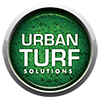Global Market for Artificial Grass
The global artificial grass market has experienced considerable growth in recent years. This growth trajectory can be attributed to several factors, including increased urbanisation, changing lifestyles, the quest for low-maintenance landscapes, water scarcity issues, and the expanding application of artificial grass beyond sports to residential and commercial uses.
Urbanisation has had a significant impact on the global artificial grass market. With urban areas worldwide witnessing rapid growth, the demand for landscaping solutions that are aesthetically pleasing yet low on maintenance is rising.

Artificial grass, with its easy installation and minimal upkeep requirements, presents an attractive solution for urban dwellers who desire lush, green spaces without the associated maintenance. The space constraints in urban areas are conducive to the installation of artificial grass, which can be customised to fit any area, no matter how small or irregularly shaped.
Changing lifestyles, primarily influenced by the fast-paced modern world, have also played a role in driving the artificial grass market. With people leading busier lives, the time available for lawn maintenance has shrunk significantly. Here, the appeal of artificial grass is clear. It provides an always-green, tidy lawn that doesn’t demand the time and effort required by natural grass, aligning perfectly with the needs of the time-pressed modern lifestyle.
Water scarcity is another critical factor influencing the market. In many parts of the world, particularly in arid regions and areas prone to drought, water conservation is a pressing concern. Natural grass requires frequent watering to remain healthy and green, contributing to water wastage. Artificial grass, on the other hand, requires no watering, making it a more sustainable and eco-friendly solution in these regions.
Interestingly, the application of artificial grass has also expanded beyond the sports industry. While sports fields were the primary users of artificial grass, residential and commercial applications are rapidly catching up. Homeowners are increasingly choosing artificial grass for their lawns, terraces, balconies, and indoor spaces, appreciating its aesthetic appeal and low maintenance. Commercial entities such as hotels, offices, and retail spaces are also leveraging artificial grass to create appealing outdoor spaces with minimal upkeep.
Looking at the geographical distribution of the market, North America holds a significant share due to its well-established sports culture and growing acceptance of artificial grass in residential and commercial landscapes. The European market is also sizeable, driven by a blend of aesthetic appeal and environmental consciousness. The Asia-Pacific region is experiencing robust growth, with rising urban development and an increasing appreciation of the benefits of artificial grass, particularly in water conservation and low maintenance.
The global market for artificial grass shows great promise, driven by urbanisation, changing lifestyles, environmental concerns, and broadening applications. As technologies advance and the benefits of artificial grass become more widely recognised, this market is poised for further growth.
